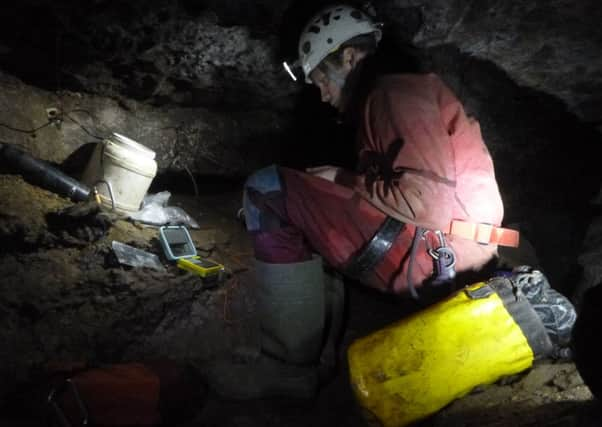Upper Wharfedale Fell Rescue Association column: New devices playing a key role in underground rescues


Information on areas searched, whether the individual or individuals have been located and the medical condition of any casualty need to be relayed back to the control centre to allow a speedy conclusion to the incident and the timely provision of medical assistance to any casualty.
With hypothermia an ever present risk, particularly on underground rescues, time is of the essence.
Advertisement
Hide AdAdvertisement
Hide AdCommunications officer Mark Lampard, from Pateley Bridge, said: “Radios for surface communication have been around ever since the formation of the team nearly 70 years ago and the technology has moved on leaps and bounds, communication with teams underground has however been a very different matter.
“Conventional radios do not work along underground passages, or between the surface and the cave below.
“Originally this problem had to be overcome by having members exiting the cave to relay messages.
“These delays reduced the chances of a successful outcome. Over time the use of underground phone systems was introduced. However these required the laying of telephone wires along the cave passage, not an easy task depending on the nature of the cave.
“The wires were also prone to damage.”
Advertisement
Hide AdAdvertisement
Hide AdThe real revolution in underground communication came with the introduction of the Molephone in the early 1980s. This system used magnetic induction to transmit messages through solid rock.
It and its successors quickly became the principal method of communication for cave rescue teams.
They were highly portable - even underground, didn’t need fixed wires and allowed instant communication with the surface team once the casualty had been located.
Cave rescue, though, is a highly specialised activity and there have been few other uses for these systems.
Advertisement
Hide AdAdvertisement
Hide AdAs a result they are not commercially available and rescue teams have had to rely on their inventors for the continued supply of new devices and repairs to existing ones.
Mark said: “We became faced with a situation where our existing devices were becoming increasingly old and unreliable and we were in danger of not having an effective means of underground communication.”
The last few years, though, have seen the emergence of a new system, Cave-Link, which has been developed in Europe.
This has many similarities to the Molephone, it is portable and can transmit through rock, but communication is via text message rather than voice.
Advertisement
Hide AdAdvertisement
Hide AdIt does, however, have a couple of advantages over the older systems in that it has greater range and the surface unit does not need to be directly over the underground unit to communicate effectively.
This means that one surface unit can transmit to several underground units placed at strategic points along the cave. The greater range is of particular importance in our area as we are on the limits of the old technology in at least one of the cave systems.
The Cave-Link system has been well tested in this environment and proved to work extremely well and we have now bought eight units at a cost of around £7,500.